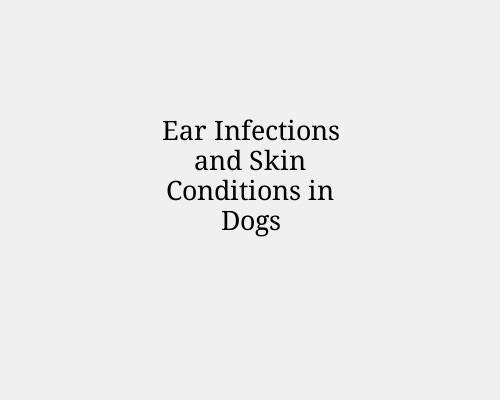Skin Tags on Dogs Should You Worry
Skin Tags on Dogs: Should You Worry?
Skin tags are common in dogs, especially as they age. These small, benign growths may appear alarming, but they are typically harmless. Understanding what skin tags are, how to identify them, and when to seek veterinary advice is essential for dog owners.
What Are Skin Tags?
Skin tags are small, fleshy growths that develop on a dog's skin. They can vary in size, shape, and texture, ranging from tiny bumps to larger, pendulous masses.
These growths are typically made of fibrous tissue and covered by normal skin.
Common Locations
Skin tags can appear anywhere on a dog's body, but they are most commonly found in areas with frequent movement or friction, such as:
Under the armpits
Around the neck
On the chest
Near the groin
On the eyelids or ears
Causes of Skin Tags
While the exact cause of skin tags in dogs is not fully understood, several factors may contribute to their development:
Age: Older dogs are more prone to developing skin tags.
Genetics: Some breeds may have a genetic predisposition to skin growths.
Irritation or Friction: Skin tags may develop in areas subject to repeated friction or movement.
Hormonal Imbalances: Conditions like hypothyroidism can increase the likelihood of skin growths.
How to Identify Skin Tags
Skin tags are typically soft, pliable, and the same color as the surrounding skin. They are often mistaken for warts or tumors. To differentiate skin tags from other skin conditions, observe the following characteristics:
Texture: Skin tags are usually smooth or slightly bumpy.
Movement: They are often loosely attached and can move slightly when touched.
Painless: Skin tags generally do not cause discomfort unless irritated.
When to Be Concerned
Although most skin tags are harmless, there are instances when veterinary attention is necessary:
Rapid Growth: If a skin tag grows quickly or changes shape, it should be examined.
Discoloration: Skin tags that turn red, black, or purple may indicate an underlying issue.
Bleeding or Ulceration: Skin tags that bleed or develop sores should be checked.
Pain or Discomfort: If the skin tag causes your dog discomfort, consult your vet.
Diagnosis and Treatment
A veterinarian can confirm whether a growth is a skin tag or something more serious. They may perform a physical examination and, in some cases, a biopsy.
Monitoring: In many cases, benign skin tags can be left alone and monitored for changes.
Removal: If a skin tag is causing irritation or concern, removal options include surgical excision or cryotherapy (freezing the tag off).
Preventing Skin Tags
While not all skin tags can be prevented, there are steps you can take to reduce the likelihood of their development:
Maintain a Healthy Weight: Excess weight can increase friction and skin irritation.
Regular Grooming: Keep your dog’s skin clean and free from mats or tangles.
Minimize Irritation: Use well-fitted collars and harnesses to reduce friction.
Conclusion
Skin tags on dogs are usually harmless, but it’s essential to monitor any skin growths for changes. When in doubt, consult your veterinarian to rule out more serious conditions. Staying vigilant about your dog’s skin health ensures early detection of potential issues and helps keep your furry friend happy and comfortable.







